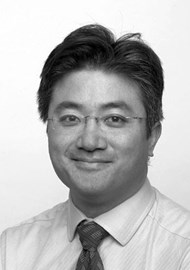Preoperative
For me the preoperative stage is actually the most important part in the patient’s journey and can take much longer than the actual operation itself. It takes me about 45-60 minutes to assess, counsel and consent for a primary blepharoplasty and much longer for revisional blepharoplasty.
My aims of preoperative assessment are to:
- Clarify exactly what the patient wants to achieve. This often involves looking at old photographs with an in-depth discussion about desired upper lid show and lid fold morphology. We discuss the concepts of skin crease height / morphology and how altering skin crease, lid fold length and steatoblepharon management affect the resultant upper eyelid show.
- Assess the involutional changes that have occurred and how we are going to reverse them. Particular attention is paid to skin crease height, the presence of blepharoptosis, brow ptosis, which fat compartments have herniated, anterior lamellar slippage, lacrimal gland prolapse, etc.
- Record a comprehensive assessment of the preoperative status. I take preoperative photographs and use a digital SLR camera with a 100mm macro lens.
- Thoroughly assess adnexal and ocular anatomy to reduce the risk of predictable complications. I perform a full oculoplastic history, examination and ophthalmic investigation including ocular surface assessment, ocular motility assessment and orbital exam. This may involve performing a Shirmer’s tear production test and dilated fundoscopy. Although all surgery has an element of risk, predictable and potentially avoidable complications can often be avoided via thorough preoperative ocular examination. I perform a full assessment of ocular motility and levator function to
assess patients with mild double elevator palsy, mild dysgenetic congenital ptosis or mild ocular motility issues. - Assess the psychological status of the patient and their suitability for cosmetic oculoplastic surgery. As a colleague once commented, “It is often wiser to decline operating on a patient that you’re not entirely comfortable with and to live and operate another day, than for them to hassle you forever afterwards and never let the surgeon fee influence your choice of patient.”
- Set a detailed plan as to exactly what I’m going to be doing on the day of surgery. This often involves detail about skin crease height, skin crease configuration, plans for the orbital septum, ancillary procedures such as levator aponeurosis repair, sub-brow fat pad repositioning / debulking, lacrimal gland repositioning and amount of skin removal.
- Establish a contract between the surgeon and the patient. The patient is explicitly informed of what is safely achievable, has realistic expectations about the surgical plan and the possible risks and complications. I email my patients a bespoke surgical plan detailing specific risks with copies of the preoperative and postoperative patient handouts and insist on at least a seven-day cooling off period before surgery.
- Most importantly, I try to establish a rapport with the patient so that the patient feels that I am approachable, that they can come to me should they have any issues / concerns at any time.
Intraoperative
- I use proxymetacaine eye drops (Chauvin) to numb the ocular surface.
- Skin crease height and configuration is customised for the patient dependent on race, sex, height and patient requests for how much postoperative upper lid show they desire and the lid fold configuration.
- I still perform a pinch test with the supine patient awake to determine skin removal using a pair of Moorfields forceps. If patients do express a desire for a large amount of upper eyelid show at their initial consultation then I would try to offer this by giving them a higher skin crease rather than maximal skin excision.
- Most patients undergoing upper blepharoplasty do so under local anaesthetic to allow me to check dynamic anatomy such as levator traction. I inject minimal amounts of local anaesthetic mixture, typically less than 1.2mls per eyelid, in the subcutaneous / preorbicularis plane using a 30G needle. ‘Moorfields mixture’: in a 20ml syringe – 10mls of ropivicaine / 10mls of lidocaine / 0.2mls of 1:1000 adrenaline. For simultaneous ptosis correction omit the adrenaline to avoid Muller’s muscle stimulation.
- I minimally dissect the orbital septum and rarely debulk orbital fat pads to avoid causing multiple skin creases.
- For patients with levator aponeurotic dehiscence intraoperatively but no preoperative blepharoptosis, I counsel them about simultaneous aponeurosis repair. With simultaneous repair, the patient is often happier with the postoperative cosmetic result (more youthful eyelid contour / height), that the repair of the atrophic levator aponeurosis reduces the risk of postoperative ptosis and that it also reduces the chances of subsequent Involutional aponeurotic ptosis later on in life, that would be more difficult to later repair in an eyelid that has already undergone blepharoplasty surgery. The cons for simultaneous levator aponeurosis repair are that the surgery is much more demanding with more complex anatomy, with a higher risk of unpredictable outcomes such as asymmetry and a higher risk of complications, e.g. lagophthalmos.
- Female patients often comment on how much they love a restored strong skin crease as it allows for a wrinkle free pretarsal platform for eye shadow with eyelash eversion for mascara wear.
- I avoid the use of dissolvable sutures in patients of Oriental descent due to the increased risk of hypertrophic scarring.
Postoperative
- My regimen consists of ice compresses hourly for the first 48 hours then four times daily (QDS) for the next 48 hours, chloramphenicol 0.5 drops QDS for one week, hyloforte drops QDS/PRN for 10 days, wearing a cartella eye shield during sleep for one week and then a silicone gel applied to the wounds for six weeks.
- Most oculoplastic surgeons document the degree of lagophthalmos, ocular motility, corneal appearance, corneal fluorescein staining and distance visual acuity.
- I personally remove skin sutures using Vannas scissors, corneal suture tying forceps at the slit-lamp biomicroscope. It’s much more comfortable for the patient and patients appreciate the personal service.
Declaration of competing interests: None declared.
COMMENTS ARE WELCOME





